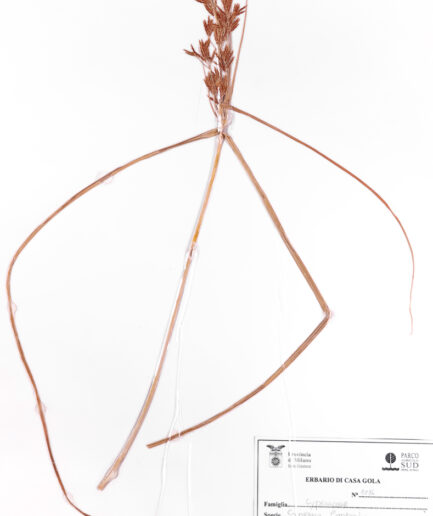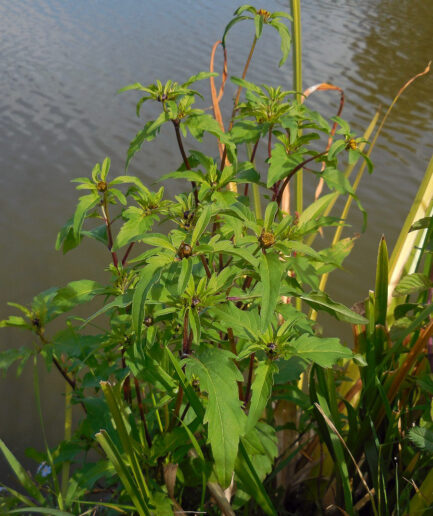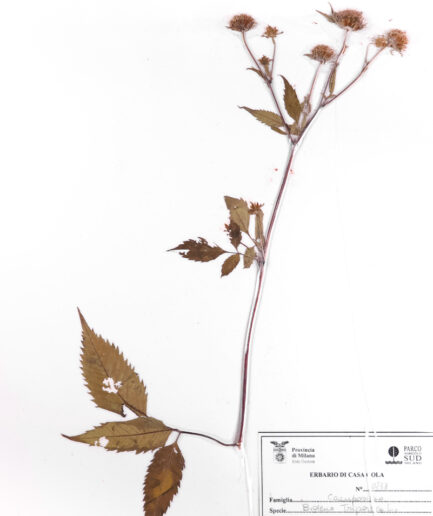Common Water Plantain
Scientific Name: Alisma plantago-aquatica L.
Family: Alismataceae
MORPHOLOGY
Growth habit and size: Perennial, herbaceous, robust and glabrous plant, with a short tuberous rhizome, up to 30–120 cm high; rooted in mud but has leaves and flowers above water.
Stems: The stems are erect, ending in dense panicles.
Leaves: All leaves are basal, with a parallel-veined blade with 5 prominent veins. The leaves emerging from water have a tubular petiole that is 3–5 times the length of the blade, which is oval, heart–shaped, or rounded; partially submerged leaves are ribbon-like and gradually change to become floating, with a lanceolate-ovate blade.
Flowers: The flowers are arranged in a pyramidal panicle with 3–6 whorled branches. They are hermaphroditic and generally inserted on secondary branches. They have long peduncles, 3 rounded sepals that are pinkish-white, and 3 nearly ovoid petals with slightly fringed edges, generally white, measuring 3 to 4 mm. Blooms from April to July.
Fruits and seeds: The fruits are flattened achenes arranged in a more or less triangular glomerule with a small beak.
DISTRIBUTION AND HABITAT
Widespread throughout Italy. Found in muddy areas with shallow and slow-moving waters, along ditches, rivers, and lakes, from 0 to 1,500 m above sea levels.
USES
The sweet, refreshing herb is hypotensive, anti-cholesterol, and hypoglycemic. In internal medicine, it is recommended for kidney and cardiovascular disorders, water retention, and acute diarrhea. The rhizome is popularly used as an astringent for the preparation of anti-hemorrhoidal lotions. The leaves can be used for local treatment of bruises and swellings. The root contains an essential oil with a wide range of medicinal uses. In the past, it was used in the Soviet Union to treat rabies, and in Sweden, leaf extract tablets were a remedy for headaches. Before taking any plant-based product (medicinal or non-medicinal) for therapeutic or similar purposes, it is always advisable to consult a doctor.
INTERESTING FACTS
This plant is often cultivated in garden ponds and pools for its showy and beautiful inflorescences.
Photo: Under free license from Saxifraga and Ed Stikvoort, Willem van Kruijsbergen, Jasenka Topic





















